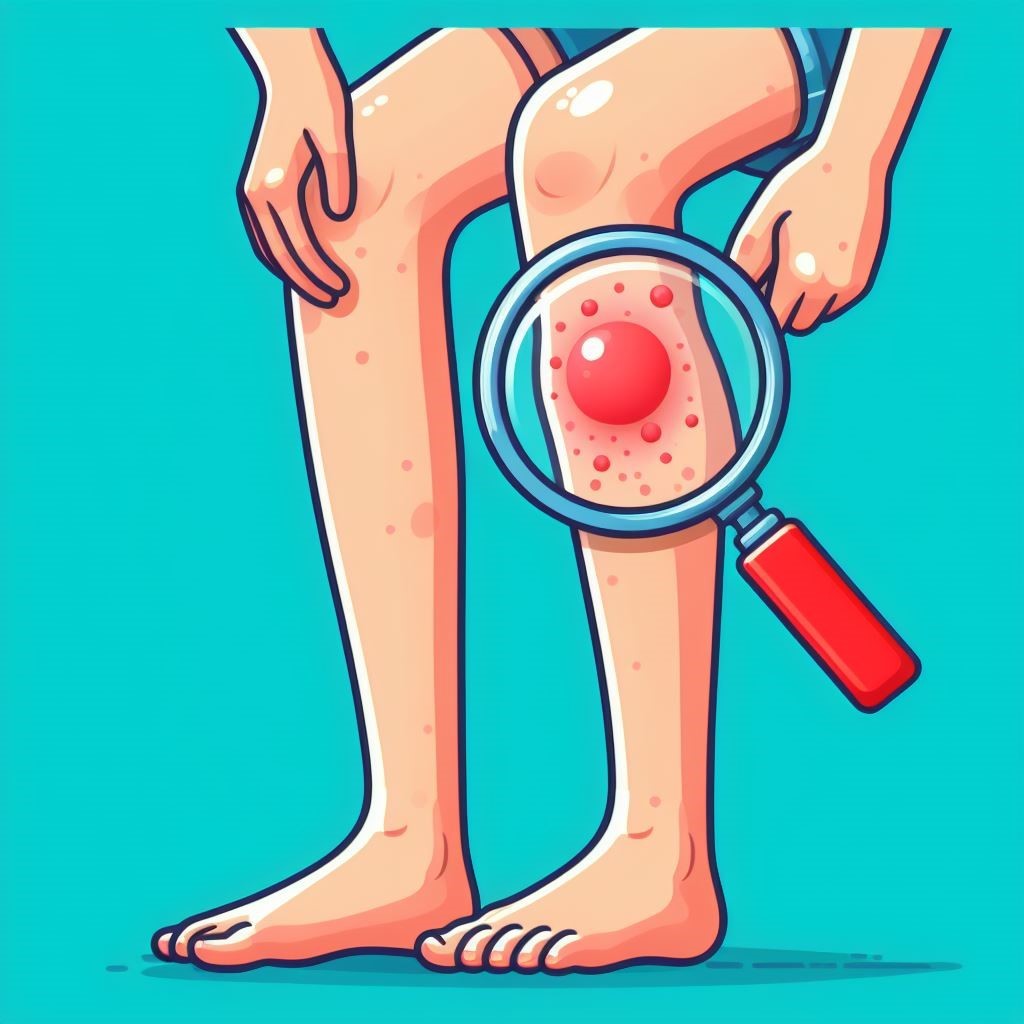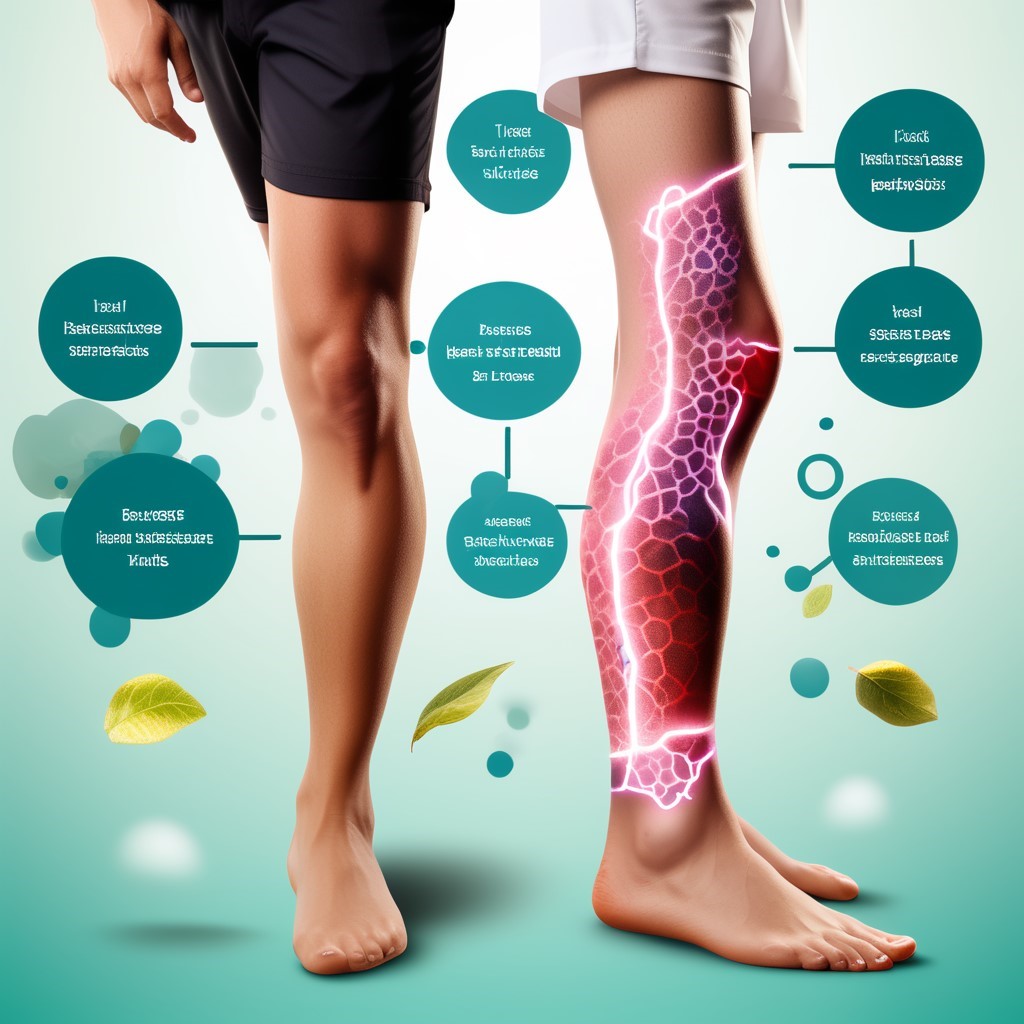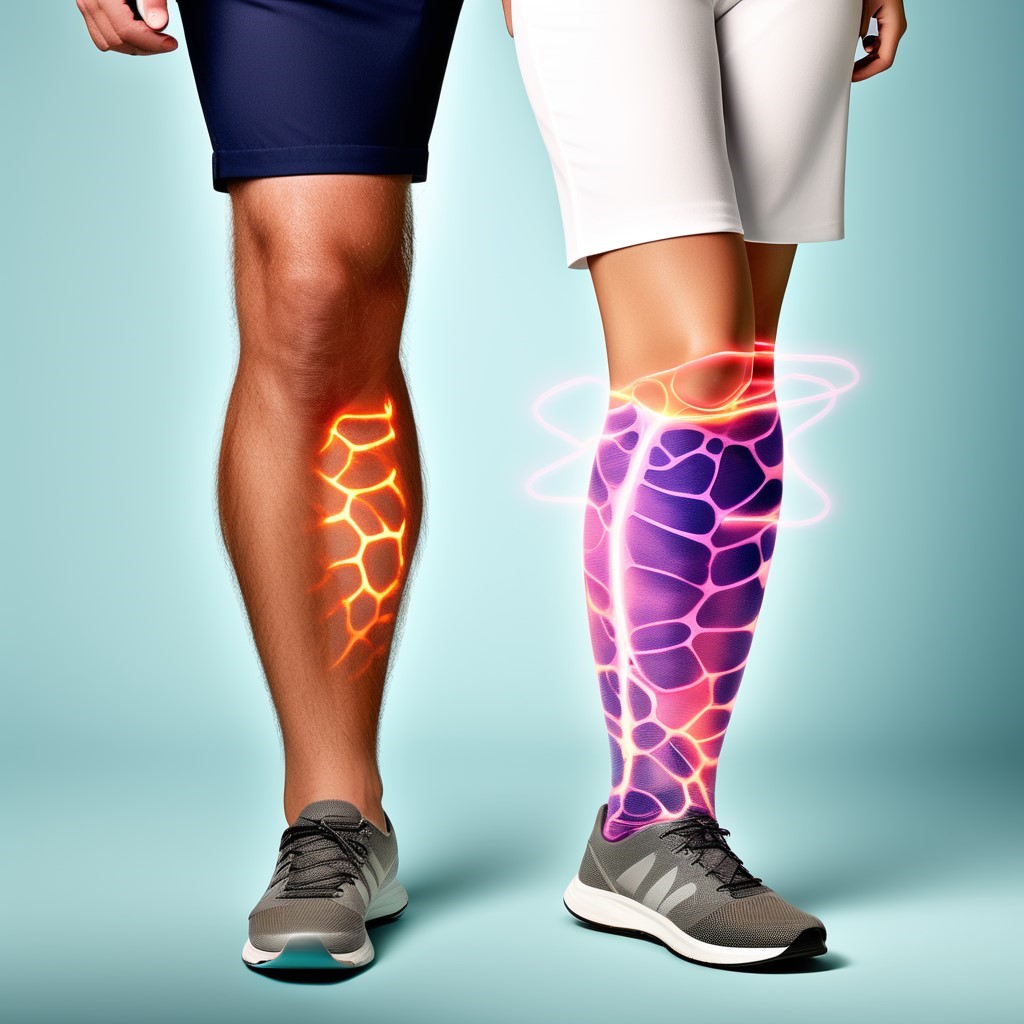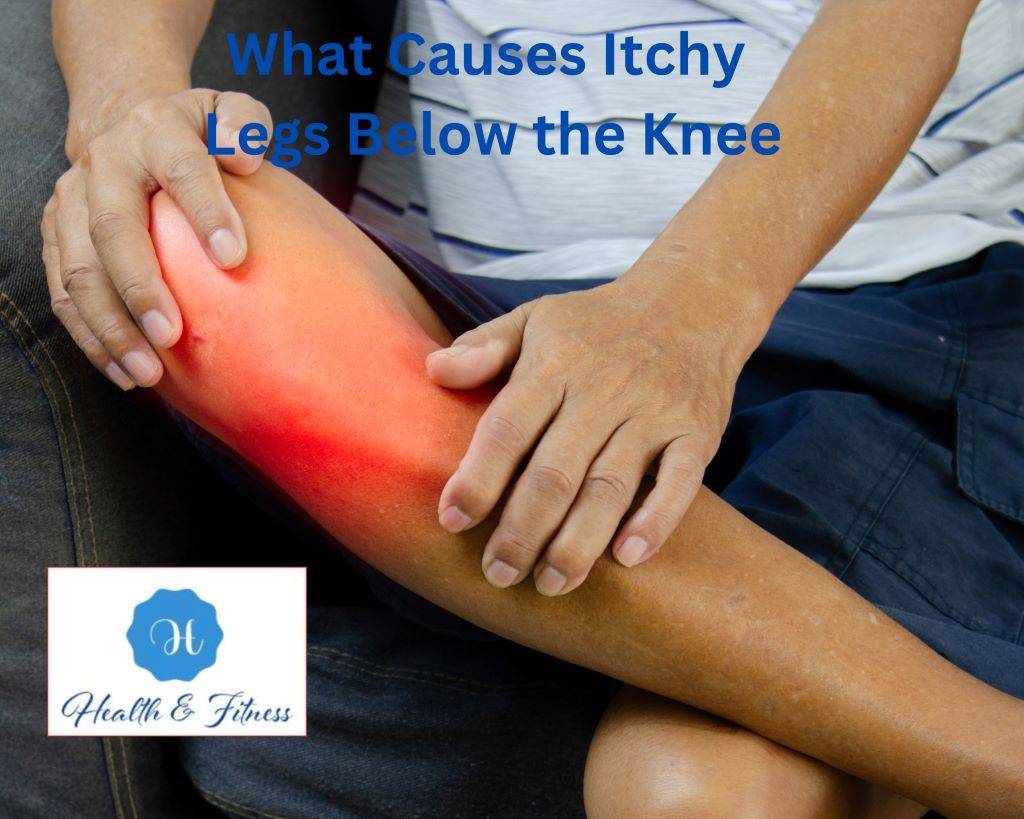What Causes Itchy Legs Below the Knee? The Best Solutions and Tips
Explore the reasons behind “What Causes Itchy Legs Below the Knee” and discover effective solutions and tips for lasting relief.
Introduction for What Causes Itchy Legs Below the Knee

Introduction for What Causes Itchy Legs Below the KneeWelcome to thoroughly exploring “What Causes Itchy Legs Below the Knee?” Many people struggle with itchy legs below the knee, a problem that can disturb sleep and daily life. Our guide explores the reasons behind the itch and, more crucially, how to manage it and stop it from returning.
Did You Know? A British Journal of Dermatology study says up to 9.3% of people experience chronic itching somewhere on their body. Figuring out “What causes itchy legs below the knee?” isn’t just about short-term relief – it’s about finding ongoing strategies to improve skin and overall health. Let’s dive into finding long-term solutions together.
Your Journey through This Guide for What Causes Itchy Legs Below the Knee

Your Journey through This Guide for What Causes Itchy Legs Below the Knee
-
- Investigate the various causes of the itch.
- Grasp how to recognize and diagnose the issue.
- Explore a host of solutions and management strategies.
- Learn prevention tips and tricks.
- Dive into case studies and real-life scenarios.
- Navigate through the FAQs.
- Discover additional resources and references.
Now, let’s delve into the potential causes of itchy legs below the knee, unmasking the mystery of this widespread predicament.
Causes of Itchy Legs Below the Knee
The quest to demystify “What Causes Itchy Legs Below the Knee?” invites us to comprehensively explore various potential instigators, spanning skin conditions, insect interactions, vascular and neurological issues, along with allergic responses and lifestyle factors.
Skin Conditions
-
- Eczema: Characterized by dry, inflamed, and itchy skin, eczema, particularly atopic dermatitis, can manifest in localized areas, including below the knees.
- Psoriasis: Identified by red, scaly patches, psoriasis can instigate substantial itchiness and may appear on the legs due to its predilection for areas experiencing friction or trauma, known as the Koebner phenomenon.
- Dermatitis: Contact dermatitis arises from direct skin contact with irritants, while stasis dermatitis occurs due to poor leg circulation, notably in the lower extremities.
- Dry Skin: Commonly occurring in colder climates, xerosis (dry skin) often presents as itchy, flaking, or peeling skin.
Insect Bites and Infestations
-
- Bed Bugs: Notorious for their stealthy, nighttime feeding, bed bug bites can cause itchy welts, often in a line or cluster.
- Fleas: Typically targeting the legs and ankles, flea bites are itchy and might present as small red bumps.
- Mosquitoes often bite around the legs, causing red, itchy bumps that can swell in certain individuals.
Vascular Conditions
-
- Varicose Veins: Known to cause itchiness around the affected veins, especially in the lower legs, due to increased pressure and poor circulation.
- Peripheral Artery Disease: Characterized by narrowed arteries, reducing blood flow to the limbs, potentially causing itchiness.
Neurological Causes
-
- Restless Leg Syndrome: Beyond the characteristic urge to move the legs, some individuals experience itching sensations.
- Diabetic Neuropathy: High sugar levels may damage nerves, leading to diabetic pruritus, particularly in the lower legs.
Allergic Reactions
-
- Allergic Contact Dermatitis: Allergic reactions to substances like nickel or poison ivy can trigger localized itching.
- Urticaria (Hives): Characterized by red, itchy welts and occasionally provoked by factors like heat or exercise, which might specifically influence the legs.
Lifestyle and Environmental Factors
-
- Shaving: Irritation from shaving or the regrowth of hair can prompt itching.
- Clothing Materials: Certain fabrics or dyes can irritate sensitive skin.
- Detergents and Soaps: Residues or fragrances may provoke an itchy response.
Facts to Ponder
-
- According to the World Allergy Organization Journal, up to 3.6% of the global population may experience chronic urticaria (hives) at some point in their life.
- The National Eczema Association reports that approximately 31.6 million people in the United States have some form of eczema.
Understanding the multitude of potential causes that answer, “What causes itchy legs below the knee?” enables a more targeted approach toward management and resolution. In the next section, recognizing and diagnosing these issues will lead us into the diverse world of solutions, remedies, and prevention.
Recognizing and Diagnosing the Problem of What Causes Itchy Legs Below the Knee
Unlocking the query, “What Causes Itchy Legs Below the Knee?” necessitates understanding the potential causes, recognizing symptoms, and ensuring accurate diagnosis. Identifying the itch’s characteristics and accompanying manifestations can pave the way to not just mitigation but lasting relief.
Symptoms Accompanying Itchiness Below the Knee
-
- Redness: A prevalent symptom, it may indicate irritation, inflammation, or an allergic reaction.
- Swelling: Especially in cases of insect bites, allergies, or vascular conditions.
- Bumps or Blisters: Common in various skin conditions, bites, or reactions.
Paying meticulous attention to these attributes or any patterns in their occurrence (such as triggering factors or cyclical appearances) can assist in elucidating the underpinning cause.
When to Seek Medical Attention?
-
- Persistent or worsening itchiness despite home interventions.
- Appearance of unusual markings, discolorations, or skin texture alterations.
- Itchiness accompanied by pain, significant swelling, or discharge.
Medical Tests and Diagnosis
-
- Allergy Tests
-
- Skin Prick Test: Identifying specific allergens that may be provoking dermatological reactions.
- Patch Testing: Useful for determining contact allergens.
-
- Blood Tests
-
- Employed to uncover systemic issues, infections, or inflammation affecting the skin.
-
- Skin Biopsy
-
- Conducted when conditions like eczema or psoriasis are suspected.
Quote: Dr. Rajani Katta, a board-certified dermatologist and author, states, “It’s not always a rash. Many internal problems, from liver disease to kidney failure, can cause symptoms on your skin.
Considerations for Recognizing and Diagnosing Itchiness
-
- Detailed History: Maintaining a journal of occurrences, potential triggers, and patterns can be pivotal for accurate diagnosis.
- Visual Examination: A qualified healthcare professional can often ascertain potential causes through a thorough skin examination.
- Referral to Specialists: A dermatologist or allergist might be recommended for an in-depth evaluation in certain scenarios.
Successfully diagnosing the root cause of itchiness below the knee involves a blend of detailed observation, professional evaluation, and, at times, various diagnostic tests. It facilitates a path that not only resolves the current issue but also aids in preventing its recurrence by addressing the underlying cause effectively.
Solutions and Management Strategies for What Causes Itchy Legs Below the Knee

Solutions and Management Strategies for What Causes Itchy Legs Below the KneeNavigating through the perplexity of “What Causes Itchy Legs Below the Knee?” we’ve investigated potential causes and diagnostic paths. Now, let’s explore a world where we transform understanding into action, where solutions and management strategies pave the way to comfort and relief.
Home Remedies and Immediate Relief
-
- Cold Compress
-
- Application: Utilize a cold compress or a damp cloth to alleviate itching and inflammation.
- Frequency: Apply several times a day, ensuring to avoid frostbite.
-
- Moisturization
-
- Selection: choose hypoallergenic, fragrance-free moisturizers to mitigate dryness.
- Timing: Employ especially after showering to lock in moisture.
-
- Oatmeal Bath
-
- Preparation: Blend colloidal oatmeal in lukewarm bathwater.
- Usage: Soak for 15-20 minutes, providing relief and reducing inflammation.
-
- Over-the-counter (OTC) Options
-
- Antihistamines: Such as cetirizine or loratadine for allergic reactions.
- Topical Corticosteroids: Like hydrocortisone for reducing inflammation and itchiness.
Medical Treatments
-
- Prescription Medication
-
- Steroid Creams: Potent than OTC options for managing conditions like eczema or psoriasis.
- Antifungal Creams: When a fungal infection is identified.
-
- Light Therapy
-
- Utilized predominantly for managing psoriasis through controlled exposure to ultraviolet light.
-
- Allergy Management
-
- Allergen Immunotherapy: Gradually introduce the allergen to build tolerance for severe or persistent allergies.
Lifestyle and Preventative Measures
-
- Attire Considerations
-
- Opting for breathable, natural fabrics like cotton.
- Ensuring clothes aren’t too tight, minimizing friction.
-
- Skincare Routine
-
- Employing mild, non-irritating skin cleansers.
- Vigilant miniaturization, particularly during colder months.
-
- Environmental Adjustments
-
- Employing bug nets or repellents to mitigate insect bites.
- Ensuring cleanliness to deter bed bugs or fleas.
-
- Stress Management
-
- Incorporating mindfulness practices, as stress can exacerbate conditions like eczema.
Alternative Therapies
-
- Acupuncture and Acupressure
-
- Utilized in certain instances to manage the itching, particularly that is exacerbated by stress.
-
- Herbal Remedies
-
- Employing topical applications of chamomile or calendula, known for their anti-inflammatory properties.
Case Study: A study in the Journal of Dermatological Treatment exhibited that a cohort of patients with chronic itching experienced a significant reduction in symptom severity through tailored acupuncture sessions over four weeks.
Support and Mental Health
-
- Support Groups: Engaging with forums or groups catering to individuals with similar conditions.
- Counselling: Consider professional help if persistent itching impacts mental well-being.
Tackling the journey of “What causes itchy legs below the knee?” allows us to weave through various strata of understanding, from causes, symptoms, and diagnosis to arriving at a spectrum of solutions. By amalgamating home remedies, medical interventions, preventative strategies, and potentially exploring alternative therapies, individuals can carve a path to managing and potentially eradicating the troublesome itch beneath the knee.
Prevention: Stepping Ahead of the Itch
In exploring “What Causes Itchy Legs Below the Knee?“, understanding how to strategically prevent its occurrence becomes pivotal. A well-rounded approach to prevention is stitched together by meticulous attention to skincare, lifestyle adjustments, and vigilance regarding potential triggers and allergens.
Skin Care Routine
-
- Daily Miniaturization
-
- Opting for nutrient-rich, hypoallergenic moisturizers.
- Ensuring consistent application, especially post-showers.
-
- Gentle Cleansing
-
- Employing mild, skin-friendly cleansers.
- Avoiding overly hot showers, which can dehydrate the skin.
-
- Protection
-
- Utilizing sunscreen when exposed to UV rays.
- Wearing suitable protective clothing in harsh weather conditions.
Environmental Controls
-
- Pest Management
-
- Ensuring cleanliness and employing pest control methods.
-
- Humidity Control
-
- Utilizing humidifiers in dry climates to maintain skin hydration.
-
- Allergen Reduction
-
- Employing allergen-proof bedding and regular cleaning to minimize potential triggers.
Lifestyle Considerations
-
- Healthy Diet
-
- Ensuring a balanced, nutrient-rich diet, hydrating adequately.
- Observing any food-related triggers for skin conditions.
-
- Stress Management
-
- Incorporating stress-reducing activities like yoga, meditation, or hobbies.
-
- Mindful Clothing
-
- Preferring non-irritating, breathable fabrics.
- Ensuring appropriate laundering to avoid potential irritants.
Medical Precaution
-
- Regular Check-Ups
-
- Engaging in periodic dermatological evaluations.
-
- Vaccinations
-
- Ensuring up-to-date vaccinations for preventable diseases that may influence skin health.
-
- Timely Medication
-
- Ensuring that any prescribed medications for existing conditions are taken diligently.
Travel and Outdoor Precautions
-
- Insect Protection
-
- Employing insect repellents and wearing protective clothing during outdoor activities.
-
- Environmental Awareness
-
- Being conscious of environmental factors like plants, water bodies, and climates that might influence skin health.
-
- Skin Coverage
-
- Ensuring the skin is adequately covered in areas known for insect prevalence or allergenic plants.
Fact: The American Academy of Dermatology highlights that up to 85% of Americans have been affected by allergic contact dermatitis at some point, signifying the importance of preventative strategies in daily routines and lifestyles.
Steering ahead of the perils of itchy legs below the knee requires a symphony of strategies, blending preventative skincare, mindful lifestyle choices, and an acute awareness of our surroundings and potential irritants or triggers. This preventative canvas provides a backdrop for managing existing issues and paves a road toward diminishing future occurrences, aligning skin health, comfort, and well-being.
FAQs for What Causes Itchy Legs Below the Knee
Navigating through “What Causes Itchy Legs Below the Knee?” uncovers a myriad of facets. Yet, reoccurring inquiries and common threads of curiosity often wind through the journey of understanding, managing, and preventing this condition. Let’s delve into some commonly asked questions.
Q1. Why are my legs very itchy below my knee?
Understanding Itchiness Below the Knee
Hello there! So, scratching our heads (or rather our legs) about “What Causes Itchy Legs Below the Knee?” The reason behind the itchiness could be one of several things or even a combination. Dry skin, especially in colder weather, could be a simple culprit, or something like eczema, where the skin gets inflamed and itchy. Allergies to fabrics, lotions, or even foods might also send your legs into an itchy frenzy! It could also result from insect bites or something more specific, like a condition called “Shin spots” or “Nodular Prurigo”, which can lead to itchy spots below the knee. When it comes to our skin, the reasons can be as varied as the colours of a rainbow!
Q2. How do I stop my lower legs from itching?
Calming the Itchy Storm Below the Knees
Oh, the itch that demands to be scratched! But hold on a second before diving into a scratching spree. First and foremost, let’s give some love and moisture to the skin with a gentle, unscented lotion. Taking a break from scented products and opting for skin-friendly, hypoallergenic variants can also offer some relief. Wearing soft, breathable fabrics (Hello, cotton!) and ensuring your bedsheets and pyjamas are also made from friendly materials could be a cozy and beneficial change. A calm, cool compress could be soothing if the itch is stubborn. And remember, while it’s tempting to scratch, try patting or applying a cream instead to prevent any further irritation.
Q3. Is itchy legs a symptom of something?
Digging Deeper: Is The Itch Telling Us More?
Sometimes, our bodies speak to us in mysterious ways, and yes, itchy legs might just be whispering something! “What Causes Itchy Legs Below the Knee?” might go beyond skin-deep. It might hint towards conditions like eczema or psoriasis, but it also could be a sign of circulation issues, especially if swelling or varicose veins accompany it. Sometimes, it could be an allergic reaction or even a symptom of a systemic issue. Thus, if the itch is persistent or doesn’t resolve with basic measures, taking the concern to a healthcare professional would be a wise and caring step toward understanding the underlying cause.
Q4. Does itchy legs mean liver problems?
Itchy Legs and The Liver: Is There a Link?
Intriguingly, our body parts are interconnected in ways we sometimes might not immediately realize! Yes, in certain cases, persistent itchiness, not just limited to legs, can be associated with liver problems – a condition known as “cholestatic pruritus”. If the liver isn’t properly processing bile, it could accumulate in the bloodstream, making the skin feel itchy. However, if itchiness is usually related to liver problems, it tends to be more widespread, not just below the knees. Other symptoms like jaundice, changes in stool and urine colour, and sometimes even a distinct odour could be present. Ensuring to chart these symptoms and discussing them with a healthcare provider can provide clearer insights and steer toward appropriate testing if needed.
Conclusion for What Causes Itchy Legs Below the Knee
We explored why legs itch below the knee and found many possible reasons, like skin conditions (e.g., eczema, psoriasis) and outside factors like allergies. It’s not just a simple itch – it could hint at various hidden causes. Looking for solutions, we focused on proactive steps like mindful skincare, adapting our lifestyles, and being alert to our environment. Our guide also answers common questions and worries about this itchy issue. Managing and easing the itchiness is a personal journey, often involving figuring out your triggers and how best to handle them. It’s a path where every bit of understanding, every preventive step, and shared knowledge wraps around you like a safety net, offering strategies, solutions, and, crucially, empathy and understanding from a supportive community.



